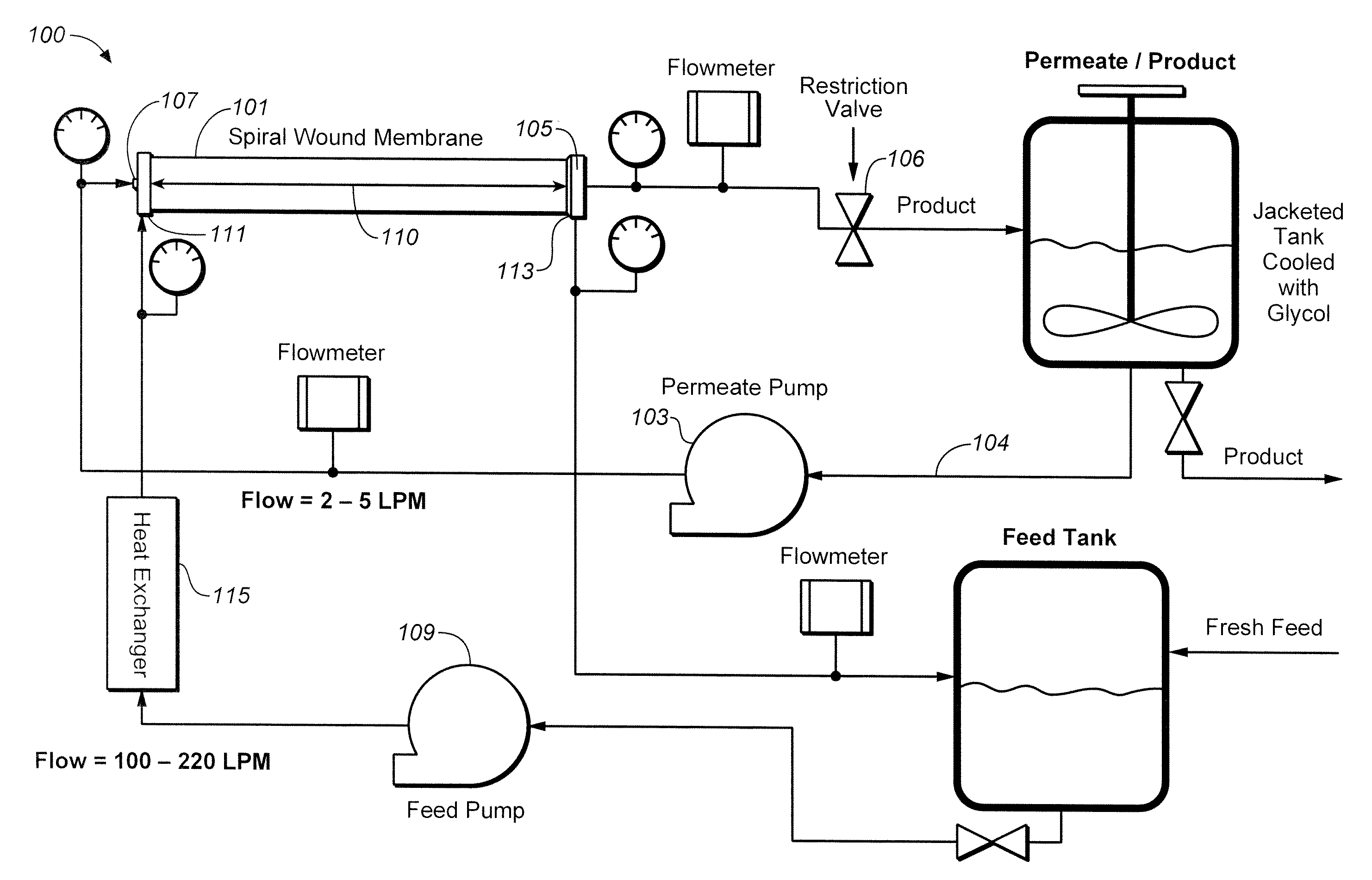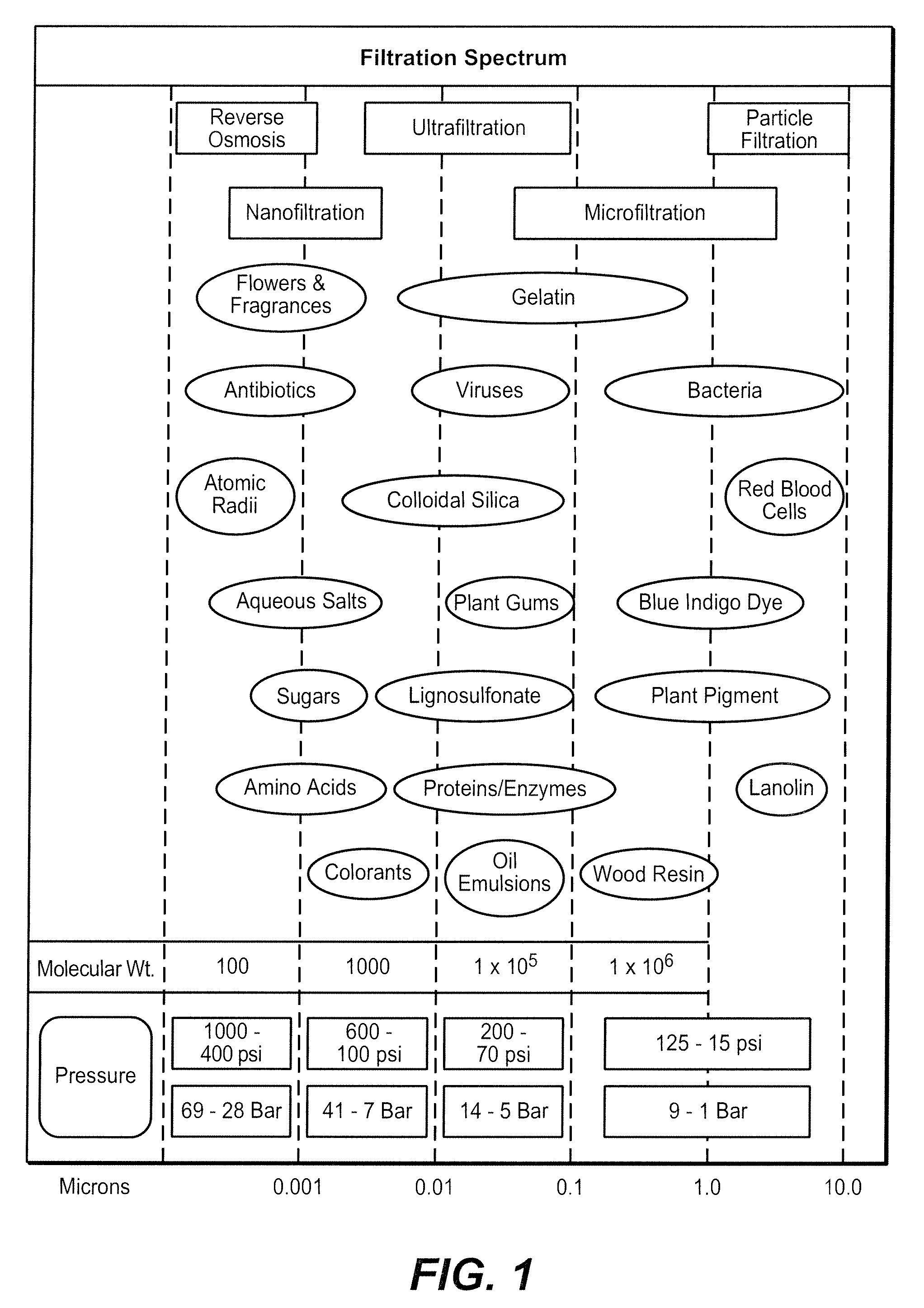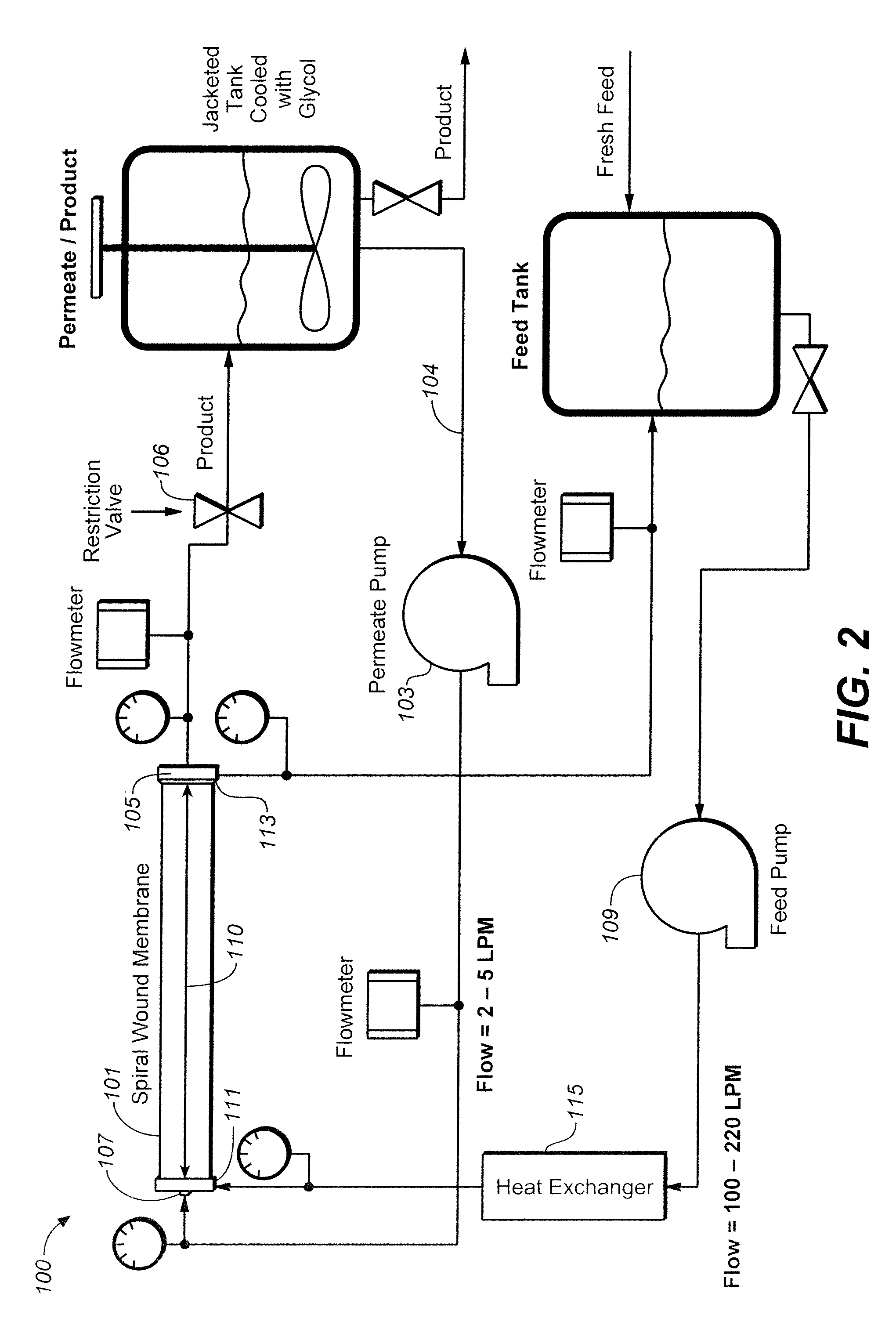Filtration with internal fouling control
a technology of internal fouling and filtering, which is applied in the field of filtering with internal fouling control, can solve the problems of large equipment footprint, large format, and large equipment footprint, and achieve the effect of reducing the number of filtration operations, and improving the efficiency of filtration operations
- Summary
- Abstract
- Description
- Claims
- Application Information
AI Technical Summary
Benefits of technology
Problems solved by technology
Method used
Image
Examples
example 1
[0212]In Runs 1-4, VCF experiments were conducted on a fermentation broth using Alfa Laval 0.2 μm nominal pore size polysulfone (PS) membranes. The host organism and enzyme in the feed broth is a B. subtilis broth and protease enzyme, obtained as FNA broth from Genencor Division, Danisco US, Inc. The operating temperature was 15° C., the broth pH was 5.8, and 3 mm diameter solid plastic balls were used as a flow resistance element (FRE). The FRE were packed into the collection tube of the spiral wound membrane until they filled the tube between its axial ends and held into place with perforated disc plates at each end of the tube. UTMP and UTMP / rUTMP modes of filtration operation were evaluated. Two different ways to over-pressurize permeate were initially evaluated, which were slowing the feed pump or speeding up the permeate recirculation pump.
[0213]Runs 1-4 were conducted under the following conditions. Run 1 was a control run in which no UTMP was applied. The average TMP was 1.5...
example 2
[0216]In Runs 5-11, VCF experiments were conducted on a different fermentation broth using a similar process lay out indicated for Example 1 where different membranes also were evaluated including a Koch 1.2 μm nominal pore size spiral membrane as a control, an Alfa Laval 0.2 μm nominal pore size polysulfone (PS) membrane as a control and also for active permeate collection, and Microdyn 0.05 μm nominal pore size polyethersulfone membrane as a control and also for active permeate collection. The host organism used for producing the feed broth was B. subtilis broth and the enzyme was a protease enzyme, obtained as FN3 broth from Genencor Division, Danisco US, Inc. The operating temperature was 15° C.
[0217]Runs 5-11 were conducted under the following conditions. Run 5 was a control run using the Koch spiral membrane (Koch Membrane Systems, Inc.) in which there was only passive collection of permeate, meaning there was no UTMP nor co-current permeate recirculation (i.e., no active perm...
example 3
[0220]Experimental studies were conducted to investigate distribution of pressure drop from inlet to outlet in a permeate collection tube fitted with a tapered insert installed within the collection tube as a flow resistance element. To achieve accurate results an actual membrane of a spiral membrane system, Koch Membrane Systems, Inc., was unwrapped and removed and the permeate collection tube inside was separately used for these experiments. The permeate tube was retrofitted so that water could be injected in a sealed manner at regular intervals along the length of the tube and the local pressure and flow rate measured at the injection sites while the other tube openings along the length of the tube were blocked. The tube had inlet and outlet openings at its opposite ends for introduction of recirculated water or other test permeate and discharge of the permeate / water collected within and passing through the particular tube. Referring to FIG. 25, for purposes of this experiment, t...
PUM
 Login to View More
Login to View More Abstract
Description
Claims
Application Information
 Login to View More
Login to View More - R&D
- Intellectual Property
- Life Sciences
- Materials
- Tech Scout
- Unparalleled Data Quality
- Higher Quality Content
- 60% Fewer Hallucinations
Browse by: Latest US Patents, China's latest patents, Technical Efficacy Thesaurus, Application Domain, Technology Topic, Popular Technical Reports.
© 2025 PatSnap. All rights reserved.Legal|Privacy policy|Modern Slavery Act Transparency Statement|Sitemap|About US| Contact US: help@patsnap.com



